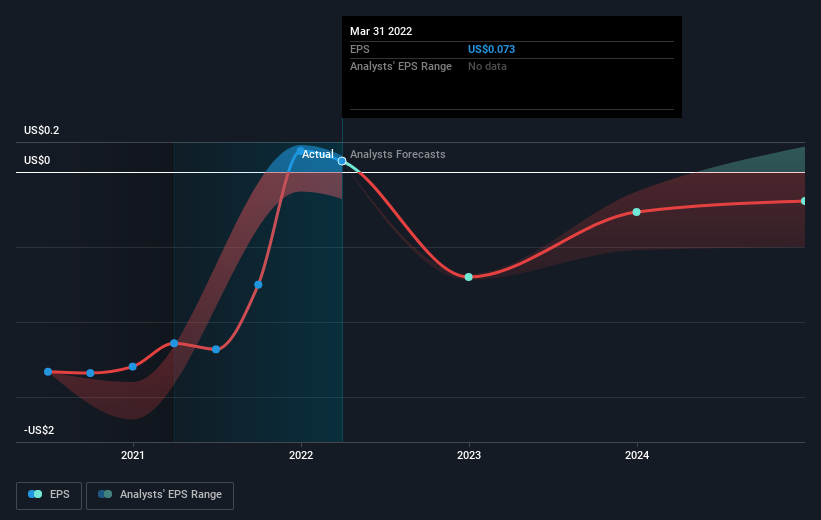Investors in Sol-Gel Technologies (NASDAQ:SLGL) have unfortunately lost 43% over the last year
The simplest way to benefit from a rising market is to buy an index fund. While individual stocks can be big winners, plenty more fail to generate satisfactory returns. For example, the Sol-Gel Technologies Ltd. (NASDAQ:SLGL) share price is down 43% in the last year. That contrasts poorly with the market decline of 14%. To make matters worse, the returns over three years have also been really disappointing (the share price is 32% lower than three years ago). Shareholders have had an even rougher run lately, with the share price down 19% in the last 90 days. However, one could argue that the price has been influenced by the general market, which is down 9.6% in the same timeframe.
It's worthwhile assessing if the company's economics have been moving in lockstep with these underwhelming shareholder returns, or if there is some disparity between the two. So let's do just that.
See our latest analysis for Sol-Gel Technologies
There is no denying that markets are sometimes efficient, but prices do not always reflect underlying business performance. One imperfect but simple way to consider how the market perception of a company has shifted is to compare the change in the earnings per share (EPS) with the share price movement.
During the last year Sol-Gel Technologies grew its earnings per share, moving from a loss to a profit.
We're surprised that the share price is lower given that improvement. If the company can sustain the earnings growth, this might be an inflection point for the business, which would make right now a really interesting time to study it more closely.
The graphic below depicts how EPS has changed over time (unveil the exact values by clicking on the image).
It is of course excellent to see how Sol-Gel Technologies has grown profits over the years, but the future is more important for shareholders. Take a more thorough look at Sol-Gel Technologies' financial health with this free report on its balance sheet.
A Different Perspective
The last twelve months weren't great for Sol-Gel Technologies shares, which performed worse than the market, costing holders 43%. Meanwhile, the broader market slid about 14%, likely weighing on the stock. The three-year loss of 10% per year isn't as bad as the last twelve months, suggesting that the company has not been able to convince the market it has solved its problems. We would be wary of buying into a company with unsolved problems, although some investors will buy into struggling stocks if they believe the price is sufficiently attractive. While it is well worth considering the different impacts that market conditions can have on the share price, there are other factors that are even more important. For example, we've discovered 1 warning sign for Sol-Gel Technologies that you should be aware of before investing here.
We will like Sol-Gel Technologies better if we see some big insider buys. While we wait, check out this free list of growing companies with considerable, recent, insider buying.
Please note, the market returns quoted in this article reflect the market weighted average returns of stocks that currently trade on US exchanges.
Have feedback on this article? Concerned about the content? Get in touch with us directly. Alternatively, email editorial-team (at) simplywallst.com.
This article by Simply Wall St is general in nature. We provide commentary based on historical data and analyst forecasts only using an unbiased methodology and our articles are not intended to be financial advice. It does not constitute a recommendation to buy or sell any stock, and does not take account of your objectives, or your financial situation. We aim to bring you long-term focused analysis driven by fundamental data. Note that our analysis may not factor in the latest price-sensitive company announcements or qualitative material. Simply Wall St has no position in any stocks mentioned.

 Yahoo Finance
Yahoo Finance 
